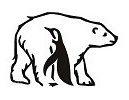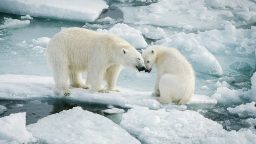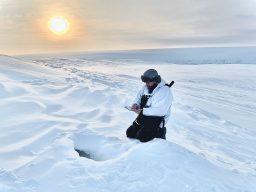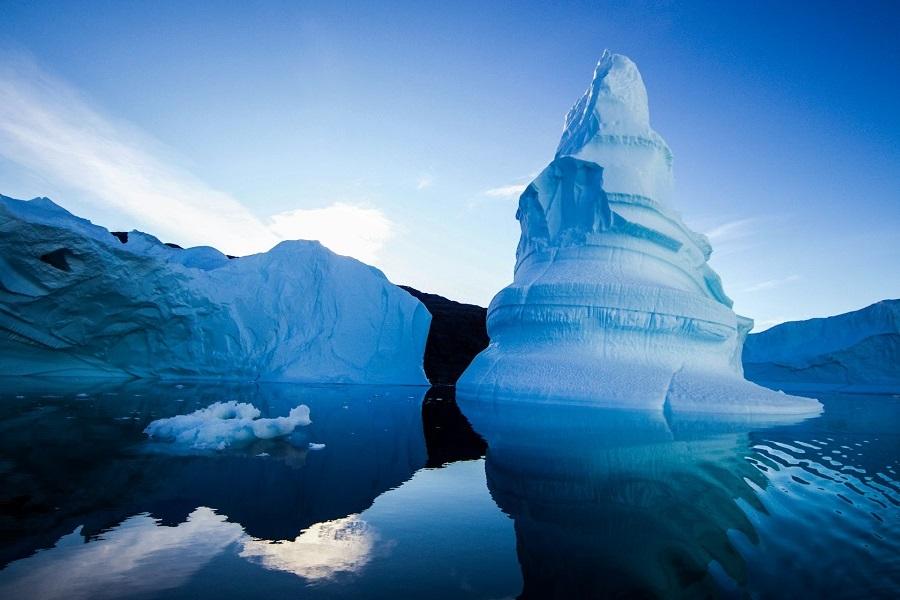
Arctic glaciers. Photo: Dylan Shaw / Unsplash
Ice Archives: how does it work?
Arctic glaciers are not just frozen bodies of water, but also real archives of the Earth. For thousands of years, they have been storing information about the climate, atmosphere, and ecosystems of the past. Modern scientists use these “voices of ice” to study the history of our planet, as well as trying to predict our climatic future.
Glaciers are formed from layers of snow that accumulate from year to year. Each layer of snow gradually turns into ice, while retaining air bubbles, dust, volcanic ash and other particles trapped in the atmosphere at the time of its formation. Thus, glaciers can be compared to the “annual rings” of trees, where each layer is a record of a specific year or even decade.
Scientists drill wells in glaciers, extracting cores – cylindrical ice samples that can be up to several kilometers long. By analyzing these cores, it is possible to obtain information about the composition of the air in different time periods, the climate of the past, information about large volcanic eruptions, data on dust storms, forest fires and other events.
In 1840, Louis Agassiz, a Swiss and American geologist, first proposed the Ice Age theory, explaining that the Earth had experienced global glaciations in the past. His research was an important step in understanding the role of ice in shaping the planet’s topography. That’s when the idea of studying the ice sheet began to emerge to study the history of the Earth’s climate.
At the beginning of the 20th century, scientists began to systematically study glaciers using meteorological observations, geological analysis, and photogrammetry. An important event was the creation of the first scientific stations in the Arctic and Antarctica, which made it possible to conduct long-term observations of glaciers.
In 1936, the first detailed photogrammetric survey of Greenland’s glaciers was carried out. Since then, maps of the Arctic ice have become not just pictures, but full–fledged 3D models. And 20 years later, using sonar technology, which has already been used in navigation and communications, British researchers were able to measure the thickness of the ice without resorting to drilling.
Glaciology studies the history of glaciers by extracting ice cores – cylindrical columns of ice. Their first study took place in 1966 in Greenland, when a well was drilled to the very base of the glacier at 1,390 meters. The core allowed us to obtain data on the Earth’s climate over the past 100,000 years, which confirmed the theory of global cooling and warming cycles.
Modern glaciology tools make it possible to study the thickness, volume and mass of glaciers even without contact with them – using satellites. For example, the EU countries launched the GRACE satellite mission in 2002, which is still monitoring Arctic glaciers, providing researchers with continuous data on changes in the Arctic ice cover.
What the Arctic glaciers have already told
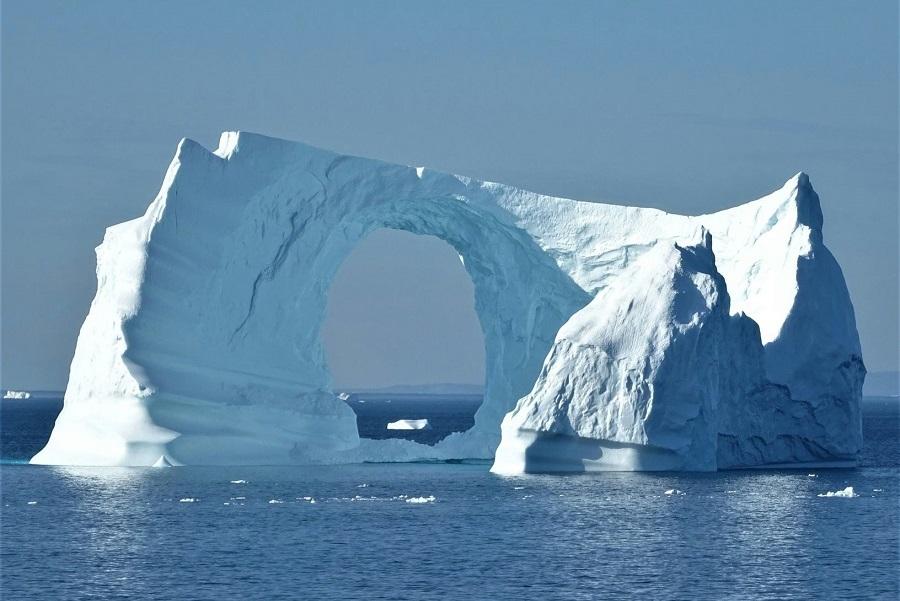
Photo: Huw Edwards / Unsplash
The glaciers of the Arctic have preserved data on the last glacial maximum, which occurred about 20 thousand years ago. Back then, huge masses of ice covered most of North America, Europe, and Asia. The analysis of Arctic glaciers helps to understand how their melting in the past affected the level of the world’s oceans and climate systems.
The study of ice cores shows that the Earth’s climate can change extremely quickly. For example, about 13,000 years ago, temperatures in some regions of the Northern Hemisphere dropped by tens of degrees in just a few decades. These data give reason for alarm, showing how quickly our planet can respond to climate change.
Thanks to the Arctic ice, scientists are finding animals, primitive people, as well as viruses that have long been absent in the modern atmosphere. So, in 2024, unknown viruses were found in ice samples in Siberia, which are more than 30 thousand years old. The so-called giant viruses, which are much larger than usual and have a complex genetic structure, have also been found in the Arctic ice.
In 2020, a surprisingly well-preserved puppy about 18,000 years old was discovered in Taimyr. He still has fur, claws, and even internal organs. DNA analysis showed that the animal belongs to an intermediate link between wolves and dogs, which gave the researchers new information about the process of animal domestication.
The oldest find in the Arctic ice sheets is 800,000 years old air found in Greenland cores. The study of the composition of the detected bubbles made it possible to determine the concentration of carbon dioxide and other gaseous compounds in ancient times, thanks to which scientists can build a detailed picture of all climatic changes in the past.
Researchers at Lund University in Sweden have made an unusual discovery thanks to the Greenland ice sheet. A group of scientists found traces of an unusually strong solar flare in the cores, which caused a geomagnetic storm on Earth in 660 BC. This information was obtained thanks to the imprints of plasma clouds that appear on Earth after solar anomalies.
Glaciers still keep their chronicle to this day. The increase in carbon dioxide concentrations since the beginning of the industrial revolution is clearly visible in ice cores. In addition, traces of chemical pollutants such as heavy metals and radioactive isotopes resulting from nuclear tests can be found in the ice.
Arctic glaciers are becoming not only witnesses of the past, but also key indicators of the present. Scientific data extracted from Arctic ice helps predict how climate change will affect our planet in the coming decades. Climate change models are based on data obtained from ice cores.
By Denis Ivanovsky
